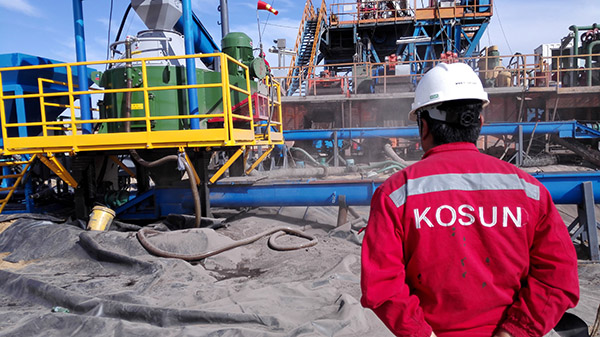- Home
- Products
-
-
Solids Control Equipment
- Linear Motion Shale Shaker
- Decanter Centrifuge
- Mud Cleaner
- Vacuum Degasser
- Centrifugal Pump
- Shear Pump
- Submersible Slurry Pump
- Mud Agitator
- Mud Gun
- Jet Mud Mixer
- Desilter
- Water Tank
- Mud Tank
- Diesel Tank
- MD210 Drilling Mud Cleaner
- Balanced Elliptical Motion Shale Shaker
- Oilfield Drilling Mud Desander
-
Solids Control System
- Drilling Mud Cooling System
- Solids Control System
- Mobile Solids Control System
- Arctic Solids Control System
-
TBM
- Tunnel Boring Mud System
-
HDD
- HDD Mud Recovery System
-
-
- News
- Services
- Marketing
- About Us
- Contact Us
- Videos
Home > KOSUN News >
Mudless Drilling Waste Treatment System Solves the Problem of Drilling Waste Disposal
Jul 26, 2023
Drilling waste/mud is one of the main sources of pollution in the oil and natural gas industry. Due to project requirements, drilling mud contains a mixture of oil, water, organic clays, and other substances. In recent years, the usage of oil-based mud, water-based mud, and composite-based mud has increased significantly in drilling operations, leading to rising costs and environmental pollution concerns.

The introduction of the mudless drilling waste treatment system successfully solves the problem of inefficient and environmentally unfriendly disposal of drilling waste. The system's main process involves the non-ground disposal of drilling waste at the wellhead, which can be done through harmless treatment during drilling. Alternatively, waste mud from the mud pit can be diluted and then treated and utilized. This system optimizes drilling environmental protection devices, allowing for the efficient and harmless treatment of mud, which can be reused. Additionally, it effectively reduces frictional resistance, lowers accident rates, and improves wellbore quality.
The benefits of the mudless drilling waste treatment system include:
1, Separated waste materials, such as cuttings, can be purified, dried, and recycled as concrete materials.
2, The slurry water generated during the cleaning of cuttings can be treated with additives, destabilized, coagulated, and subjected to solid-liquid separation to form mud cakes. These mud cakes can be mixed with clay or shale in certain proportions and used for brick-making.
3, The separated filtrate can undergo various pre-treatment processes, such as destabilization, coagulation, flotation, oxidation, and adsorption filtration, to remove major pollutants. This treated water can be used for oilfield reinjection, safe well re-injection, or meet regulatory discharge standards. Wastewater can be further treated through a sewage treatment system to achieve compliance with discharge standards.


